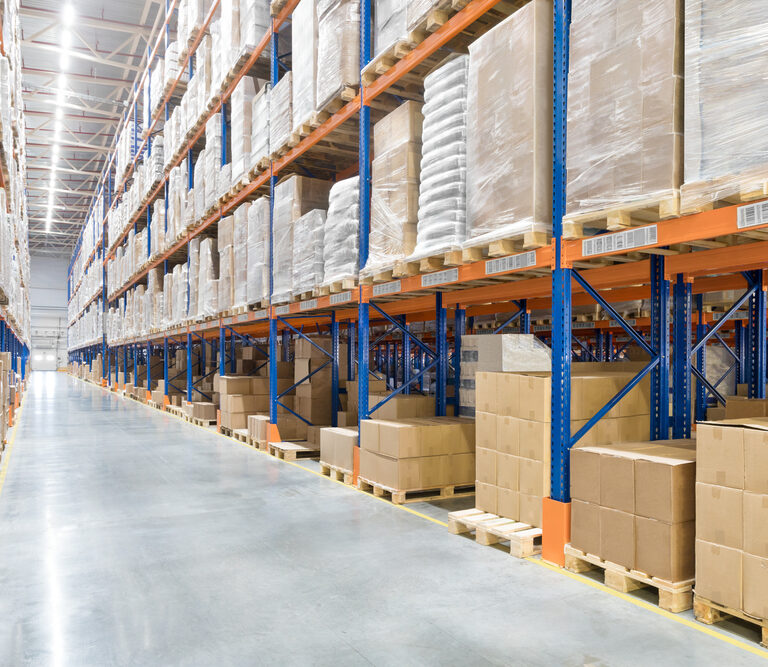Technology is the foundation of every supply chain project. What’s the state of yours?
Technology solutions drive the modern supply chain, but enterprise technology is often relegated as an afterthought during key supply chain projects. Behind every supply chain project, whether it’s a network strategy design, facility design, software or automation implementation, there are five components of enterprise technology that contribute to a holistic, successful project:
- Mobile devices
- IT infrastructure and wireless
- Device managed services and system support
- Security
- Automated asset and item tracking
When supply chain executives aren’t up to speed on the latest technologies in these areas and don’t consider how they work together, they miss out on significant opportunities for ROI and efficiency gains. Every time.
Let’s look at each of the five components of enterprise technology underneath every supply chain project and how they connect back to the long-term success and ROI of your supply chain.
1. Mobile devices
Mobile devices are a core tenet of the supply chain across manufacturing, distribution and retail. Whether completing a pick in the warehouse, tracking inventory in the retail store or collecting valuable data in the supply chain network, enterprise mobile devices are mission-critical for interacting with your supply chain data. However, the average CEO or Chief Supply Chain Officer rarely realizes the vast potential for ROI by having the correct devices that match workers’ daily use cases.
Modern enterprise mobile devices are equipped with powerful components and advanced processing power to be able to keep up with complex processes and fill the growing demands for the connected worker to do more with their devices. For example, the right mobile devices can enable significant improvements in areas like:
- Collaboration tools (e.g. Microsoft Teams)
- Labor management
- Task management
- Inventory management
- Personal assistance (training, instruction)
Today’s mobile devices extend far beyond scanning barcodes. They’re equipped with advanced technology, such as AI accelerators, cameras, sensors and voice capabilities, real-time analytics, edge computing, cloud integration and connectivity, to increase execution power at the Intelligent Edge of your supply chain.
All of these points of intersection between mobile devices and the supply chain have a direct impact on your ROI. Let’s talk about how.
How Mobile Devices Impact Your Supply Chain ROI
Having the right devices available for the right use cases is key at every point in the supply chain. Lack of access to those devices, whether due to downtime or simply not having made the investment, will limit how much your key business functions are able to accomplish.
For example, if a device goes down in the warehouse, key processes like picking, packing and sortation could be stalled. In the retail store, order fulfillment could be impacted, contributing directly to lost sales. The everyday worker would feel these pains immediately, while supply chain decision makers may not see the connection.
Leadership Considerations
Having enterprise mobile devices at peak functioning in the right points in your processes is critical. Consider these questions for your organization:
- Am I getting the most value out of my mobile devices?
- Do my mobile devices best support the processes my supply chain workers execute every day?
- Have I considered the lifecycle management involved in maintaining my mobile devices?
2. IT infrastructure
Reliable IT infrastructure and high-performance wireless networks are the backbone of supply chain operations. Every piece of technology you use to run your supply chain, your WMS, POS, ERP and mobile devices, relies on always-on, redundant connectivity.
Wireless environments have evolved significantly in just a few short years to enable seamless mobility and IoT integration. As with mobile devices, advancement in capabilities also means advancement in complexity.
Modern businesses demand secure, scalable and resilient network infrastructure that supports hybrid and cloud workloads to keep operations running smoothly. As a supply chain decision maker, the connectivity inside of your four walls environments may not be top of mind, but there are several ways it can tie back to ROI in your supply chain projects.
How IT Infrastructure Impacts Your Supply Chain ROI
Real-time decision making is foundational to the supply chain. For example, as inventory enters the warehouse, your WMS has to make real-time decisions about where that inventory will go and how it will get there. As products are sold in the store or online, customer-facing inventory needs to be updated in real time to avoid lost sales. A breakdown in wireless connectivity at any point in the inventory flow can create supply disruptions.
Modern infrastructure reduces downtime, increases agility and drives cost efficiency. The more reliably your network operates, the better real-time decisions can be made and the better customer service levels you’ll be able to provide.
Leadership Considerations
As a supply chain leader that is wondering about your own IT infrastructure, ask yourself these questions:
- Does my infrastructure and deployment strategy enable maximum coverage and performance?
- Is my infrastructure being proactively monitored, managed and optimized?
3. Device managed services and system support
Throughout your supply chain, your team expects immediate and seamless IT support to stay productive. The growth of remote and hybrid workforces has begun to place even greater demands on service desks and system availability.
Modern service desks integrate automation, self-service portals and AI-driven ticketing and response to empower team members with productivity, collaboration and automation, all of which will pay dividends over time.
How Device Managed Services and System Support Impact Your Supply Chain ROI
Device managed services and system support directly correlate to your team’s productivity and system reliability. While system outages and glitches are ideally not a frequent occurrence, they will happen. When they do, the faster your team can get IT support and get things back up and running, the faster you can get back to business.
The hidden costs of poor IT support can show up as reduced productivity, decreased employee morale resulting in higher turnover, higher maintenance costs and a negative impact on your reputation.
With proactive, 24/7/365 device and infrastructure management, you can reduce downtime, improve employee satisfaction, speed up resolution times and improve overall efficiency.
Leadership Considerations
When considering your own device management and system support, ask these questions:
- Do I have end-to-end, proactive monitoring, patching and lifecycle management?
- Is my organization stable, compliant and secure across the entire enterprise?
4. Security
Organizations are facing increasing threats across both IT and physical environments. Data breaches, ransomware and facility intrusions disrupt operations and damage trust, both of which can reduce ROI in the short and long-term.
Supply chains need holistic security protections that cover both digital and physical assets. Your firewalls, zero-trust access and surveillance systems need to work together to protect the data in your operations.
Practically, security will play a role in many areas of your supply chain, including:
- Video Security: Monitor your physical sites and provide notification of any disturbances through AI integration
- Badge Access Integration: Flag unauthorized badge use, tailgating and access anomalies
- Managed Detection & Response: 24/7 threat hunting and incident response led by a dedicated team of security analysts
- Network Detection & Response: Real-time threat detection and behavioral monitoring
- Next-Generation Firewall Protection: Intrusion Prevention & Detection (IPS/IDS) to block known and emerging threats
How Security Impacts Your Supply Chain ROI
We’ve written an entire blog on the true cost of a security breach. What it really comes down to is risk mitigation and regulatory compliance. Manufacturing and customer service are two of the top four at-risk industries for security breaches, which means supply chains are particularly at risk.
The average cost of a single lost or stolen record is $150. With how many records are typically involved in a single data breach, you could be facing millions of dollars in costs.
Leadership Considerations
Data safety is not just a concern for the cybersecurity department. Supply chain decision makers should also consider the following:
- What security measures do I need to take for any new technologies being implemented?
- Does my organization use proactive monitoring and response to reduce risk exposure?
- What security measures are we implementing to protect our warehouses and distribution centers?
5. Automated Asset and Item tracking
A high-functioning supply chain needs to have constant visibility into the location of items and assets in the supply chain, including inventory, mobile devices, material handling equipment and loaded and empty trailers, to name just a few.
While Shrinkage is a common issue in retail supply chain, it’s not the only reason for asset tracking. Businesses in all industries can be subject to vendor fraud, accounting errors, lost shipments and the simple misplaced item. Asset tracking needs to be included in every supply chain project to ensure any new or changing assets are accounted for.
Automated asset tracking tools help avoid common missteps like improper RFID label compliance, missing containers/items and late arrivals, providing a strong chain of custody. They include things like:
- Passive and active RFID tagging technology
- Specialized RFID readers and sensors
- Bluetooth low energy (BLE) technology
- IoT sensors
- AI video surveillance
How Asset Tracking Impacts Your Supply Chain ROI
Asset loss and retail chargebacks are a huge source of risk for today’s supply chains. Retailers have started imposing chargebacks on suppliers for non-compliant goods, with some imposing chargebacks of up to three percent, which can have a significant negative impact on your bottom line.
Global shrinkage is also up, estimated at $132 billion in 2024. While RFID and CTEs may not be top of mind for supply chain decision makers, retail chargebacks, loss prevention and shrinkage most certainly are. What supply chain leaders are often surprised to learn is that these concepts are fundamentally intertwined.
Leadership Considerations
Ask yourself these questions when considering your automated item and asset tracking technology:
- How am I tracking assets across processes like receiving, put-away, replenishment, picking, packing and shipping?
- How is asset loss currently impacting my organization’s bottom line and how could asset tracking be involved?
The Supply Chain Leader’s Biggest Enterprise Technology Challenge
As supply chain complexity grows, the everyday worker is faced with increasing expectations around speed, productivity and efficiency. Delivering on those expectations often means having to do more with the technology at their disposal. Without support from above, this task can feel almost impossible.
The key challenge for many supply chain executives is that they don’t know what they don’t know. The current technology landscape is presenting a three-fold challenge for supply chain leaders and decision makers:
- Workers are facing rising pressure to do more with their technology
- As technology grows more advanced, it is becoming harder to manage
- Technology keeps changing and advancing, and supply chain leaders can’t keep up while also managing their daily responsibilities.
The good news is you don’t have to handle all of this on your own. The first step is understanding why these five enterprise technology projects are important and how they directly intertwine with the supply chain projects that are already on your mind. Next is to find a partner that can easily incorporate these considerations into your supply chain project. The key is to find a partner that has both supply chain and enterprise technology expertise to ensure all of the dots are connected along the way.
enVista Masters Enterprise Technology in Your Supply Chain
enVista has been working with supply chain leaders for 20+ years to turn enterprise technology from a headache to a competitive advantage. We uniquely understand the intersection of supply chain operations and enterprise technology and can provide an unmatched depth of expertise across both areas.
Start your enterprise technology journey by assessing your technology foundation and think about what might be in order for your next supply chain project.
Need help with your assessment or have questions? Speak with an enterprise technology expert.





